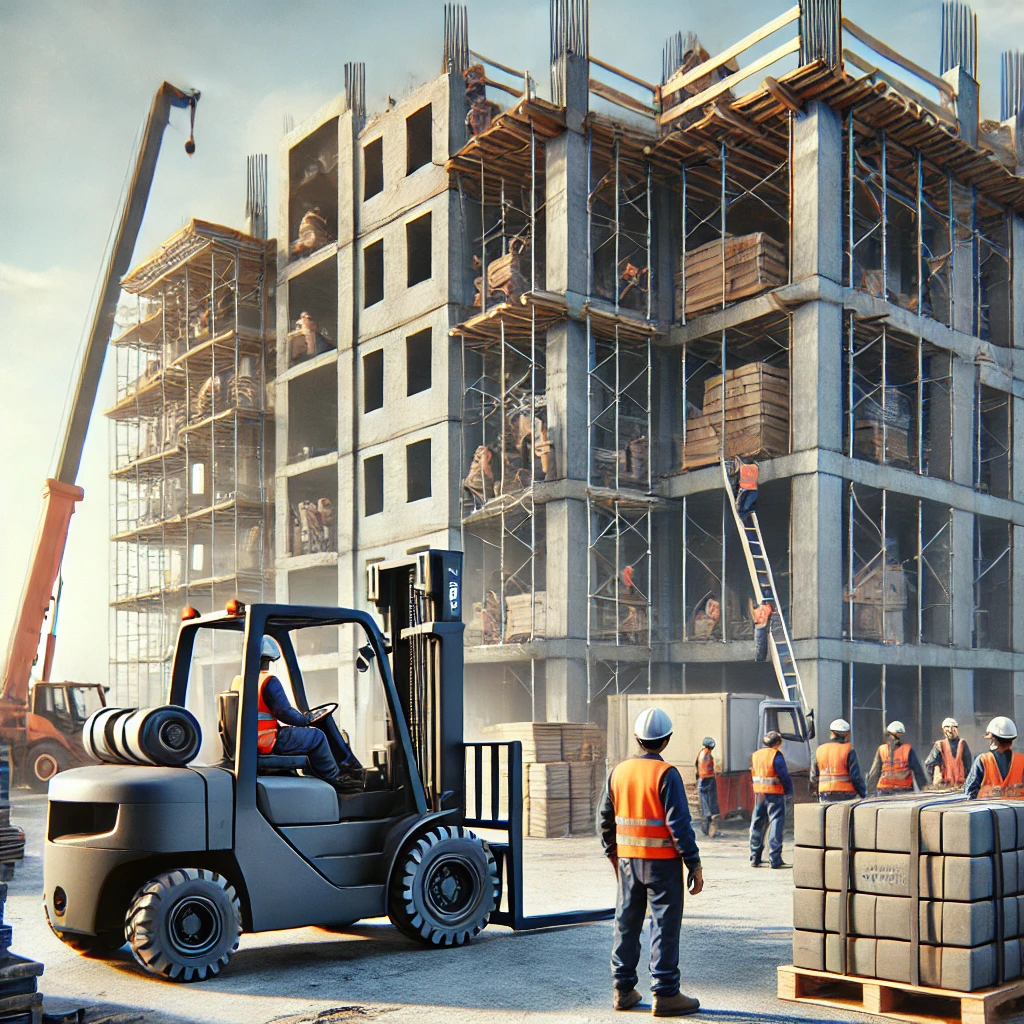The forklift industry is undergoing a significant transformation due to rapid technological advancements and evolving market demands. With a global valuation of $62 billion in 2022, the industry is set for continued growth and innovation.
The top trends in forklift technology include automation, enhanced safety features, and increased energy efficiency. These advancements are revolutionizing how businesses handle material operations.
Automation in Forklift Technology
Automation is a major driver in forklift technology, with autonomous forklifts becoming more common in warehouses worldwide. These forklifts use advanced sensors and AI to navigate and perform tasks independently, significantly enhancing efficiency and productivity.
Autonomous Operation and AGVs
Autonomous forklifts and Automated Guided Vehicles (AGVs) are equipped with sophisticated sensors and cameras. These forklifts can navigate warehouses and transport materials autonomously. They follow pre-defined routes, avoiding obstacles to ensure smooth operations. AGVs are often used in large warehouses and manufacturing plants to handle repetitive tasks, optimize workflow, reduce labor costs, and improve productivity.
AI Integration and Smart Forklifts
AI-powered forklifts use machine learning to adapt to their environment. They can analyze data from various sensors to make real-time decisions. AI integration allows these forklifts to predict maintenance needs, ensuring minimal downtime. Smart forklifts can communicate with other automated systems within the warehouse, creating a seamless flow of operations. These forklifts can also monitor load weights, movement patterns, and overall performance. By integrating AI, companies can achieve higher efficiency, lower operational costs, and better safety standards.
Enhanced Safety Features
Enhanced safety features like real-time monitoring and collision avoidance systems are transforming the industry, making workplaces safer. Modern forklifts are equipped with collision avoidance technology that use sensors to detect obstacles and alert operators to potential dangers. Proximity sensors provide warnings when a forklift gets too close to objects or people, helping to avoid accidents in busy environments.
Ergonomic Design and Operator Comfort
Modern forklifts are designed with ergonomics in mind to boost operator comfort and reduce fatigue. Features such as adjustable seats, steering columns, and control panels help customize the setup for individual operators. Suspension seats and vibration dampening systems minimize the physical impact on drivers, creating a smoother ride. Climate-controlled cabins and improved visibility through panoramic views further enhance operator comfort and safety, making the work environment more appealing. These ergonomic improvements prevent injuries, increase productivity, and improve workflow efficiency.
Energy Efficiency and Sustainability
Energy efficiency is another trend transforming forklift technology. Electric forklifts, powered by lithium-ion batteries, are becoming more popular due to their longer lifespan and lower maintenance costs. This shift not only reduces operational expenses but also supports environmental sustainability, aligning with global goals for a greener future.
Electric Forklifts and Alternative Power
Electric forklifts are increasingly popular due to their zero emissions. They run on electric-powered systems, such as lithium-ion batteries, which offer long-lasting and efficient power solutions. Hydrogen fuel cells provide electric forklifts with quick refueling times and produce only water as a byproduct, further minimizing the environmental impact. The combination of electric power and alternative sources significantly lowers the carbon footprint of material handling operations.
Sustainable Practices and Materials
Many manufacturers are adopting sustainable practices to create eco-friendly technologies, including the use of recycled materials in producing forklifts, which helps reduce waste and conserve natural resources. Companies are also focusing on designing more energy-efficient forklifts to reduce power consumption. Eco-friendly technologies such as regenerative braking systems, which capture and reuse energy, further enhance efficiency. These practices contribute to environmental sustainability and provide long-term cost savings.

